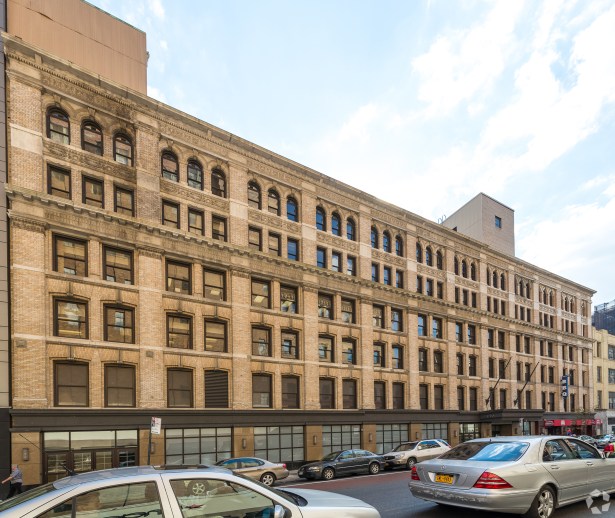Checking if CLOs Are A-OK
CLOs are financing an astonishing volume of bridge debt. But has securitizing short-term mortgages become any safer since the big bad pre-Great Recession days?
By Mack Burke and Matt Grossman December 5, 2018 1:15 pm
reprints
“Everything under the sun.”
That’s the phrase Missy Dolski used when she recalled the smorgasbord of commercial real estate loans that issuers poured into pre-crisis collateralized debt obligations (CDOs), a high-risk brand of financing that collapsed with the credit crunch of 2008.
“Mezzanine, construction debt and other lower-in-the-stack bonds” were all in the CDO mix, the Värde Partners director recalled, and ravenous investors, as well the three major rating agencies, were happy to play along.
It turns out that a lot of the loans that were packaged in CDOs were bad. Toxically bad. Sink the economy bad.
They contained many of the high-risk mortgages and debt that, in retrospect, never should have been approved and when the financial crisis hit 10 years ago, trade in CDOs melted down completely.
That is part of the reason why Collateralized Loan Obligations (CLOs), which are the more tightly regulated, higher-quality successor to CDOs, have drawn some uncomfortable comparisons to their pre-crisis ancestor.
Proponents and detractors argue over how much the new instruments have evolved, but one fact is clear: CRE CLO financing has taken the transitional financing market by storm. Through the first nine months of 2018, issuers brought $9.9 billion worth of CRE CLOs to investors—a 29 percent increase over all 12 months of 2017, according to data from Kroll Bond Rating Agency
In the last 18 months, Värde has been just one of the issuers in the ring. For an example of the lift that a sponsor’s business plan might call for, look to a loan Värde made as part of its VMC Finance 2018-FL2 deal, which closed in October and securitized $462.3 million of transitional debt.
The deal’s second-largest loan, a $56 million mortgage on a San Antonio, Texas, office complex, looks ambitious at first blush. The building is 82 percent occupied, and its sponsor, developer J. Richard Rodriguez, aims to raise rents at the 663,000-square-foot property as it increases occupancy to about 90 percent. And that’s with two of the building’s three largest leases set to expire in summer 2019, in a sub-par office submarket with vacancies just below 18 percent. (Rodriguez’s firm, Brass Professional, did not respond to an inquiry by press time.)
The loan exemplifies the more conservative standards to which rating agencies and investors have held with issuers like Värde. Fitch Ratings, which analyzed the deal, noted that Rodriguez is an industry veteran who has worked successfully in San Antonio for 30 years. And in its financial modeling of the deal, Fitch refused to assume the success of Rodriguez’s plan for the building, instead granting him credit for the building’s value on an as-is basis. By those metrics, the loan came to Rodriguez at a debt-to-value ratio of 70.9 percent and a debt-service coverage ratio of 1.26—basically in line with the more generous end of what a borrower could expect from a traditional commercial mortgage-backed securities financing. On the other hand, Rodriguez signed up to pay a fixed interest of 7.5 percent on the three-year loan, several hundred basis points higher than what a CMBS borrower would owe.
CRE CLOs are proving to be a non-recourse financing source that serves a distinct purpose in the marketplace, solving the capacity issue around balance sheet financing. As an added bonus, when the market is functioning well, a CRE CLO is an accretive form of financing that complements warehouse financing lines nicely.
The sector continues to fight off comparisons to murky, pre-crisis CDOs but issuers with whom CO spoke said there’s a clear distinction.
Before the financial crisis, “a lot of those [CDO] deals were done for arbitrage,” said a CLO issuer at a prominent bank who declined to speak on the record. “Even the very bottom piece of those structures was sold—or, at most, a much thinner piece was held.”
Today’s CLOs—which include only senior debt—are considerably less dicey than CDOs used to be, when a hodgepodge of riskier debt existed within the bonds. Now, it’s been left to investors to decide: Are they safe enough?

When investment firm Insight Investment Management has its introductory meetings with CRE CLO managers, Richard Talmadge, a senior analyst there, said his firm spends nearly the entire meeting discussing the issuer’s “philosophy and originations approach” and deciphering the issuer’s motivation.
“How aligned are [issuers] with our interest?” Talmadge said he asks himself. “It often comes down to the notion of—will that individual manager—the face of the CRE CLO-issuing vehicle or the fund that’s bringing the transaction—lose [his or her] job if that ship sinks?”
Talmadge added that he worries issuers might be quick to abandon the space if deals go sideways. “All too often, you have much bigger entities [in play], where it’s too easy for them to slip into the debt world and then slip out into maybe the equity world when things go south on the debt side. Not that we want to see any harm come to them, but if our deal is failing, we want them to feel pain—individually.”
But if every financing’s terms are a gentle tug-of-war between lender and borrower, CLO arrangements have trended in the borrowers’ favor of late as a glut of capital spurs competition among financiers. Stressed loan-to-value ratios determined by KBRA—an estimate for how debt burdens would compare to property values during times of adversity—rose sharply over the course of 2018, reaching a rolling average of 127.9 percent, up from 118.6 percent at the beginning of 2017. That trend indicates lenders have been more generous with loan proceeds.
Likewise, CLO spreads have condensed as lenders have competed to bring borrowers transitional funding at a lower cost. As of the third quarter, typical CLO loans were closing, on average, at 439 basis points (bps) above Libor, compared with 480 bps last year.
Still, issuers emphasize that when it’s time to underwrite a loan, they insist on toeing the line. Daniel Vinson, the head of CMBS structured finance at Barclays—a significant CLO issuer—outlined the credit window that his and other firms have focused on.
“Ninety-five percent to 99 percent of these loans are floating-rate, generally with an initial term of two to three years, with two or three one-year extension options,” Vinson said. “They tend not to be ready for [long-term] conduit financing, perhaps because they’ve lost a tenant, or the sponsor is repositioning.”
With interest rates on the rise, shorter-term debt with flexible rates is just what investors want to see, according to Talmadge. “To be exposed to a stabilized commercial mortgage product that you’d find in the conduit world really means that you’re exposed to a one-way trade—which is that rising rates translate into lower valuations,” he said. The transitional debt in CLOs trades at higher interest rates that can float higher yet if benchmarks like Libor drift upwards—just the ticket for a large investment firm like Insight these days. “The upside-downside risk is more balanced in a commercial real estate CLO loan than it would be in a stabilized CMBS conduit loan,” Talmadge explained.
Greystone & Co. has been one of the beneficiaries of that trend. A booming economy has brought a plethora of construction completions that need to be bridged to permanent financing in recent years, which has left lenders like Jeff Baevsky, a senior managing director at the firm, swimming in loans to pool into CLOs.
“Greystone’s bridge line is up 150 percent from last year, and we’re looking to double the size of our portfolio over the next two years,” Baevsky said. “We’ve always seen more opportunity in the space than we can lend against as an institution.”
And investors’ appetite to acquire stakes in precisely that sort of debt has had no trouble keeping pace.
“A lot of institutional investors are looking for short- to medium-term investment paper,” Baevsky said. “You want to invest in a security that can go up with rates, and [CLOs are] a Libor-based investment-grade opportunity for the investors.”
Issuers of the transactions are quick to point out that the current crop of CRE CLOs reflect a much soberer approach to securitizing transitional loans than their pre-crisis CDO predecessor.
For one thing, the market has found issuers’ behavior more encouraging this time around, because the institutions behind CLOs have shown a greater propensity to keep skin in the game. For both regulatory and reputational reasons, risk retention has become a watchword.
And Talmadge, a veteran of Fitch Ratings, has so far found the work of ratings agencies sturdy and vigilant from the investor perspective. After all, he is one their analysis is meant to protect.
“I think the ratings agencies have generally been responsible players in the rollout and expansion in the commercial real estate CLO space,” Talmadge said, adding that the inclusion of Fitch and Kroll to the duo that cornered the sector before the financial crisis, S&P and Moody’s, has inspired positive innovations in the industry’s ratings guidelines.
Pre-crisis CDO issuers wanted the debt off their balance sheets fast, eyeing quick profits by trading on the difference in their capital costs and the higher returns that securities investors rewarded them.
“Now, [issuers] generally hold everything below investment grade, which means they’re holding about 20 percent,” the CLO issuer who spoke to Commercial Observer noted. “If they’re retaining the bottom and it’s a substantial piece, it’s a true financing. That’s the big difference.”
The transaction parties have also been paying much closer attention to how each loan pans out over the lifespan of the CLO.
“Whether you’re the lender or the servicer, the surveillance process is much more intense,” Vinson said. “When you start to see a property’s development deviate from what the business plan suggests, that could trigger conversations with the borrower, and sometimes more.”
Dolski, the director at Värde, said that the company’s insistence on strong underwriting goes directly to the value of its reputation. “I think the investor reception to the Värde name was very positive,” she said of the firm’s most recent transaction, a $462 million deal that securitized 25 loans on 27 properties. “We were very happy with the execution, and I think it speaks a lot to the platform.”
Issuer reputation is crucial to Greystone as well, Baevsky said, noting that investors’ hunger for its multifamily CLOs in particular has allowed the lender to structure the deals on its own terms.
“We’ve basically said, if you want my product, you’re going to have to invest with me through an actively managed structure,” Baevsky said. Investors are willing to go along because “they have a good idea of what we’re investing in.”

Issuers, of course, are happy to cheerlead for the sector, but the investors who meet them across the table realize that a modicum of caution is in order. The amount of money chasing short-term real estate debt is unprecedented, Talmadge realizes, which forces him to consider whether it could dry up again, leaving CLO borrowers in the lurch when it comes time for refinancings they’d counted on landing.
In particular, Talmadge said, in any upcycle, issuers might attempt to push a structured vehicle beyond its capabilities. “I think one thing we haven’t particularly liked is the level of modifications that we’re beginning to see built into some of these transactions,” he said, referring to a growing volume of managed deals that issuers can modify even after investors have bought the securities. He said the trend “has given increasing latitude to [issuers] to do as they see fit, which may not always be in the best interest of the bondholders. It may, [however], very well be in the best interest of maintaining an originations relationship.”
Insight’s Melissa Niu, who works in structured finance at the firm, listed a couple modifications the firm has observed that it finds worrisome: “There are things like a longer re-investment period that issuers are asking for. Things like, can they sell risk credits to their affiliates; and [what are] the requirements around that? How much cushion [do] they want? Some are structured very tight, like a 1 percent cushion and some are pretty wide at like 6 percent and above.”
Far from abdicating issuers of responsibility, though, questions like those make it more incumbent on CLO lenders to develop a strong underwriting brand.
“Certainly, sponsor matters more than it would with respect to a stabilized loan,” Barclays’ Vinson said. “You want them to have some experience in transitional properties where they’ve proved they’ve been able to execute.”
Talmadge said that “maybe a sponsor might not hit the price point they initially planned, but I think there’s an expectation that as we’re all doing our underwriting—and I’m assuming that discipline is remaining within these transactions—that it will let through the right amount of deals that have the right real estate and the right markets.”
Dolski acknowledged that not all CLO loans are created equal.
“There’s a wide range of what I’ll call ‘lift’ in some of these business plans. Some of them are much more transitional in nature than others,” Dolski said. “We’re very much basis-focused and focused on the downside. How much downside in cash flow and how much movement in cap rates can a piece of real estate like this withstand while we still get paid back?”
Similar to Fitch’s approach to Värde’s VMC Finance 2018-FL2 deal, Kroll granted an evaluation of a loan on relatively conservative terms with the Hilton Canopy hotel in Portland, Ore.’s Pearl District neighborhood. That property’s five-year, $25 million loan, the third-largest in a CLO issued last month by New York City-based ORIX corporation, is intended to tide the newly developed property over until its up and thriving. Since it opened over the summer, it charged average daily room rates in line with other Portland hotels, but its occupancy has been just above 50 percent—well below the market average of 83 percent. Today, cash flow is $3.2 million, a number the owners—a trio of local investors—say will improve by nearly two-fifths to $4.4 million when the hotel is stabilized.
Kroll gave the hotel credit for a cash flow of just $3.3 million at stabilization—just 4 percent above the current level.
One challenge for rating agencies plying the waters of the CMBS market is how to deal with actively managed CLOs, which, unlike their static counterparts, can evolve significantly over time as issuers add new loans to replace landlords who may have paid off their debt early. Through this cycle, issuers and rating agencies have made significant progress in keeping a close eye on how those changes affect deals’ creditworthiness.
“We have 39 different eligibility criteria,” Baevsky said of Greystone’s process for adding new loans to its active deals. “One of them is that the loan I’m putting in is rated by the rating agency, and they’ve given a no-downgrade letter.” On a recent multifamily CLO, for instance, Baevsky said that Greystone had already turned over about 50 percent of the portfolio.
“After a while, [the rating agencies] kind of get what a Greystone bridge loan looks like. It makes their life a little bit easier.”
Of course, a key question remains whether CLOs will fare significantly better than CDOs should the music suddenly stop. Late last month, the major U.S. stock market indexes dipped into correction territory, and concerns about trade wars and energy prices reinforced the notion that business cycles don’t last forever.
“I don’t think we want to be buying into a transitional property at the height of 2007, or the equivalent [play],” Insight’s Talmadge said. “So, I think we definitely bought some extra innings with this most recent fiscal stimulus package that we saw here in the U.S.”
He added: “Just the fact that new dollars are going into a lot of these transitional product puts it in a much better position than a lot of competing product out there. And that’s true whether it’s office, retail or multifamily. A key message from this is: if you aren’t constantly refreshing that asset with new dollars, then you’re putting yourself in a weakened position against that competitive product.”
“I do think there’s decent structure within the CLOs such that investors should feel pretty comfortable about being made whole in a downturn scenario,” Dolski said. Still, the Värde executive added that her company’s risk-retention participation—a crucial difference from the tawdry tale of CDOs—is an important way to prove it’s willing to bet on itself.
“We wrote the loans, so clearly we have a lot of conviction in the business plans,” she said.
Talmadge set the terms out starkly.
“You are observing now a wall of money that’s unlike anything we’ve seen historically in the space,” he said. “It perhaps raises a fair question: ‘Is that wall of money here to stay, or is it really just hot money that’s found a home?’ ”


